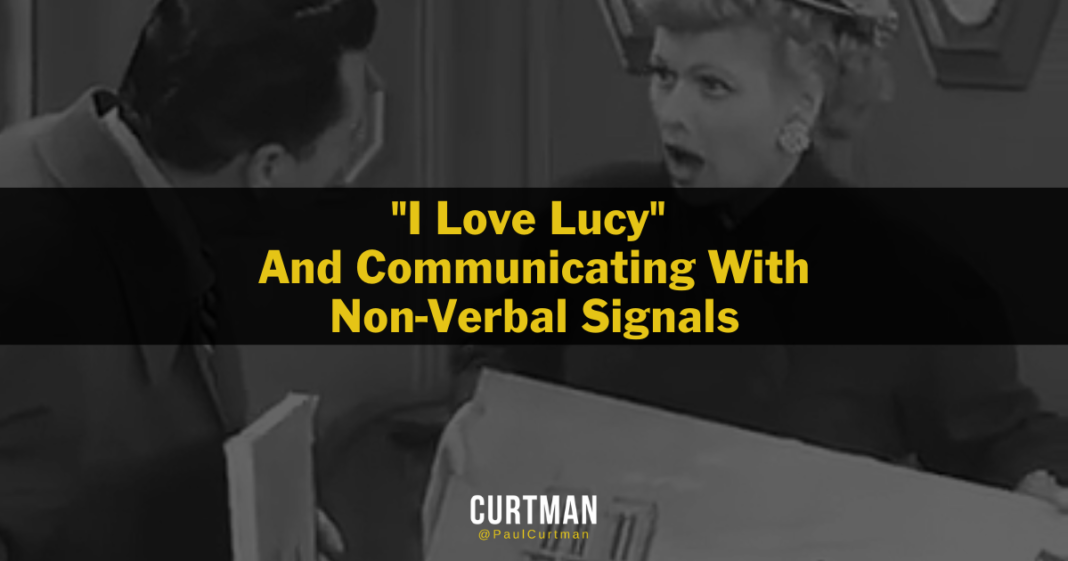Everybody gives off are non-verbal signals. What signals are you giving off? I’ve watched body language specialists comment on a politicians speech to help audiences understand whether or not the politician was being fully transparent or whether or not he was hiding something. There are many things to consider when trying to read non-verbal signals and they have to be considered together. You can’t just say that since a persons arms are crossed then they’re being defensive because some people cross their arms when they are comfortable. What then do arms crossed on a politician signal? In a case like this you have to consider the other variables at play. For example, what is his tone of voice? Is he smiling? Are his eyebrows raised or furrowed low. Does he overall seem at ease or is he fidgeting and nervous looking? Is the rate of his speech casual or is it fast and assertive?
I Love Lucy was the first TV show to record in front of a live studio audience. When the idea was first pitched, there were a lot of naysayers who said it was to risky – the actors would have to perform well enough to solicit an audible response from the audience in a way that was fully predictable by the writers. Fortunately for the writers and the producers, Lucille Ball was a master at non-verbal communication. Whether she was speaking or not, many if not most of the audience responses to the gags in the show came from Lucy’s facial expressions and body language than anything else. Go to YouTube and watch a clip of I Love Lucy with the sound off and you can clearly see when her character is happy, sad, surprised, disgusted, frightened or any other emotion and reaction in between. You can study body language by watching Netflix. All you have to do is watch a show and pay close attention to the facial expressions and the gestures of the actors as they speak to each other.
Watch this clip from I Love Lucy. Watch it with the sound off and then with the sound on. You can see how Lucy and the other actors subtly exaggerate their facial expressions and body language in order to better communicate the their response to the predicament they find themselves in.
Suggestions for improvement:
- Study and practice your non-verbal signals. Stand in front of a mirror, and as if you were looking at and speaking to someone else, tell joke. Talk about a political issue you care deeply about. If you’re a candidate for office then give your stump speech or if your in sales, give a sales pitch. Watch yourself. Look at where your hands and arms go. Look at the details of your face. Do your eyebrows go up and down? Do the corners of your mouth curl up or down? Do your eyes and mouth smile together?
- Learn to adjust your tone. Again, stand in front of the mirror but when you talk, talk as though you’re trying to get your message across to a four year old. This will do two things, it will force you slowdown and use the inflection of your voice far more carefully and it will also force you to use your facial expressions for to reinforce you tone and message. This might seem awkward to practice this way but it will help you hone the range of tone and expression and you will feel more comfortable pushing them further when you need to.
Take aways:
- You’re always communicating regardless whether you’re speaking or not.
- Your tone is part of your message, practice using it.
- Your face needs to express the reaction you want your audience to have. Practice using it.
- Read the 7 Second Rule about the importance of the first impression and pay special attention to mirroring.



